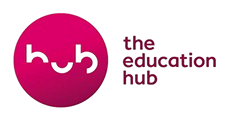In a webinar, Michelle McKinlay from the University of Auckland explored important foundational concepts as well as practical strategies for supporting students whose first language is not English in mainstream classroom settings.
It is essential to begin by understanding the foundations that underpin teaching children with diverse language knowledge. These include questions pertaining to cultural understanding and inclusion. Teachers need to be aware of their own cultural positioning and their own cultural biases. It is important to think about everyone’s cultures, and majority as well as minority cultures. Events like cultural festivals and celebrations are the tip of the iceberg in terms of culture, and everyone needs to be aware of the wide variety and range of nuances within cultures. For those of the Pākēha culture, it is important to remember that Aotearoa New Zealand’s education system developed out of the English educational system through our colonial past, so in English medium education Pākēha are constantly surrounded by their own cultural norms.
Classrooms need to be safe and critically conscious learning spaces for students. Students who have experienced racism need to know that all of their teachers are mindful and sympathetic. Language and power are inextricably linked, so it is important to acknowledge this and work to understand it. It can be valuable to talk about important topics like power and equality with students, even quite young children, because this models safe spaces for students to talk about these topics. Being critically conscious involves critiquing unjust and unfair social structures, including educational structures.
Language teaching must start with knowing the learner, as it is profoundly related to students’ cultures and heritages. It is important to try not to be reductive or simplistic when describing students’ cultures: for example, a Filipino student could speak or understand one or more of over 100 languages from the Philippines, while a Chinese student’s heritage language might be Cantonese, Hokkien, or another language, and students of Pasifika heritage may have been born in New Zealand. Identity is complex, and it is valuable to teach the complex ideas and also the complex language to express them. From there, students can choose what fits for them and how they would like to describe themselves: having a nameable, describable identity is empowering.
Teachers need to be aware of and legitimise common bilingual practices. For example, when a Tongan student says ‘I speak Tonga’, they are translanguaging, or using two languages in the same sentence, as ‘Tonga’ is the Tongan word for the Tongan language. Translanguaging is a typical bilingual practice.It is helpful to draw students’ attention to the fact that they are translanguaging, and support them to notice which words they are using in which language. Another example might be students who use regional language varieties of English, and it is important that teachers are aware of these and value them equally, rather than privileging New Zealand English over other legitimate regional varieties. Bear in mind that it is not necessary to be fluent in both languages to be considered bilingual.
Students may learn to decode relatively quickly and then appear to plateau because their reading comprehension can no longer keep up with their decoding ability. To help build comprehension, students need to read broadly at a text level where they can read fluently, so that they can focus on their comprehension. Discussion and dialogue around the texts being read support comprehension. It is essential to align ESOL support from language specialist teachers with the curriculum areas being currently covered in class, so that the student is building their comprehension alongside their language proficiency in those topic areas. Students need explicit, metacognitive learning opportunities that integrate rather than separatetheir language learning from their subject content learning.
Choose to use terms such as ‘level’ and ‘proficiency’, which reflect the progress that language learners are making all the time, rather than words like ‘ability’, which can lead to deficit framing of bilingual learners.
Drawing on a learner’s ‘total linguistic resource’ is valuable, but must be done carefully. Teachers sometimes completely ignore their students’ heritage language resources, and at other times do the opposite (in a well-intentioned way) by assuming that students can speak, read, and write their heritage language perfectly fluently, or might even expect students to ‘perform’ by asking them to translate, write, or speak in their first language in what might be quite an unnatural setting.
Language and literacy overlap, but they are separate. Typically, younger children learn oral language quickly and are likely to be at emergent or early levels in literacy, so their oral language will usually give you a more reliable picture of what language they ‘know’. Be aware that children with disrupted schooling – whether through a multi-country and multilingual backstory (as former refugees may have experienced) or children who have moved home and school many times within New Zealand – are very likely to have ‘delayed’ effects on their literacy learning. Using the rich visual resources in primary school classrooms can be an effective way to support students with no English. Older (secondary, intermediate, maybe late primary) migrants from education systems with a heavy focus on written language, such as Korea, China, and Japan, may be more confident to read and write than they are to speak. Allowing them to read and write in their own language rather than requiring them to try and read and write in English will help them feel socially connected and engaged in class.
There are many resources and professional development opportunities available for teachers. Language learning takes time, effort, and funding, and teacher expertise takes time to develop, too. There are a number of free resources available from The Ministry of Education (see below). Teachers can join local professional learning and support groups by emailing the MOE ESOL team on Info.ESOL@education.govt.nz. The refugee and migrant team of the Ministry of Education are also an excellent and well-funded resource.
- The ESOL principles are available here.
- ELIP (graded texts with language features) and SELLiPS (teaching activity ideas) are available here or request hard copies through Down the Back of the Chair
- ELLP Pathways – Foundation to Stage 3 are available here.
- ELLP Pathways professional development module is available here and takes about 1 hour.
- Professional support is available here.
- The Learning Village resources are an online programme for intermediate/secondary emergent learners.

